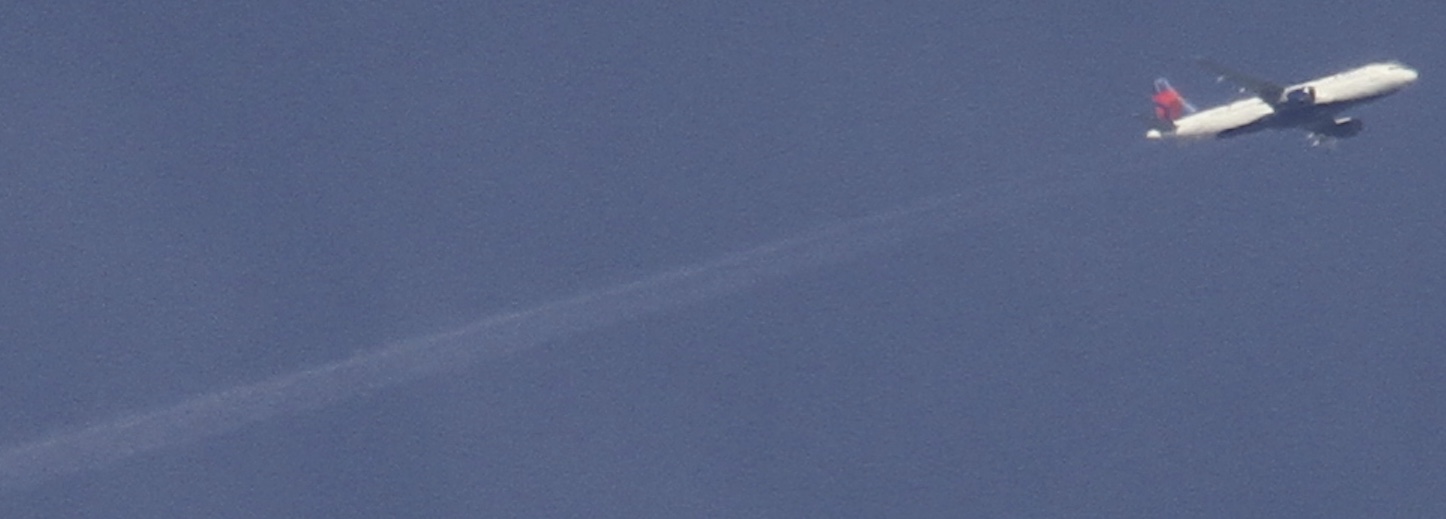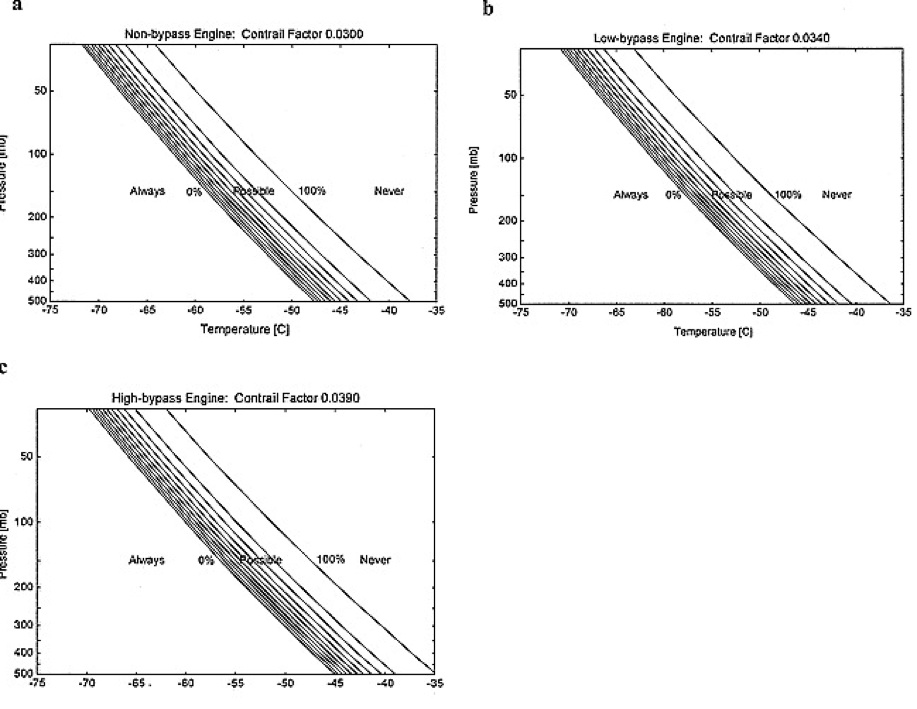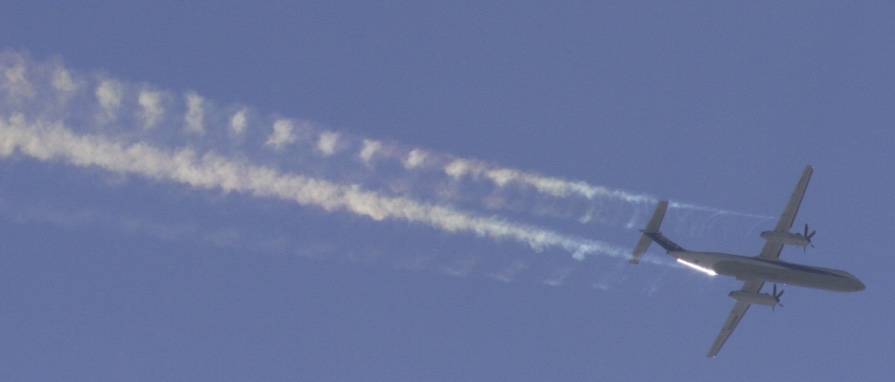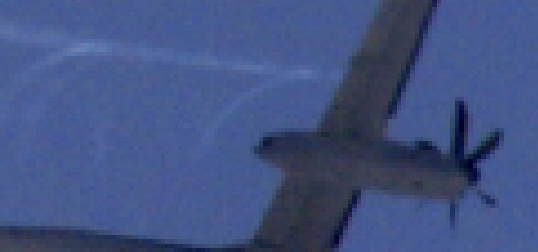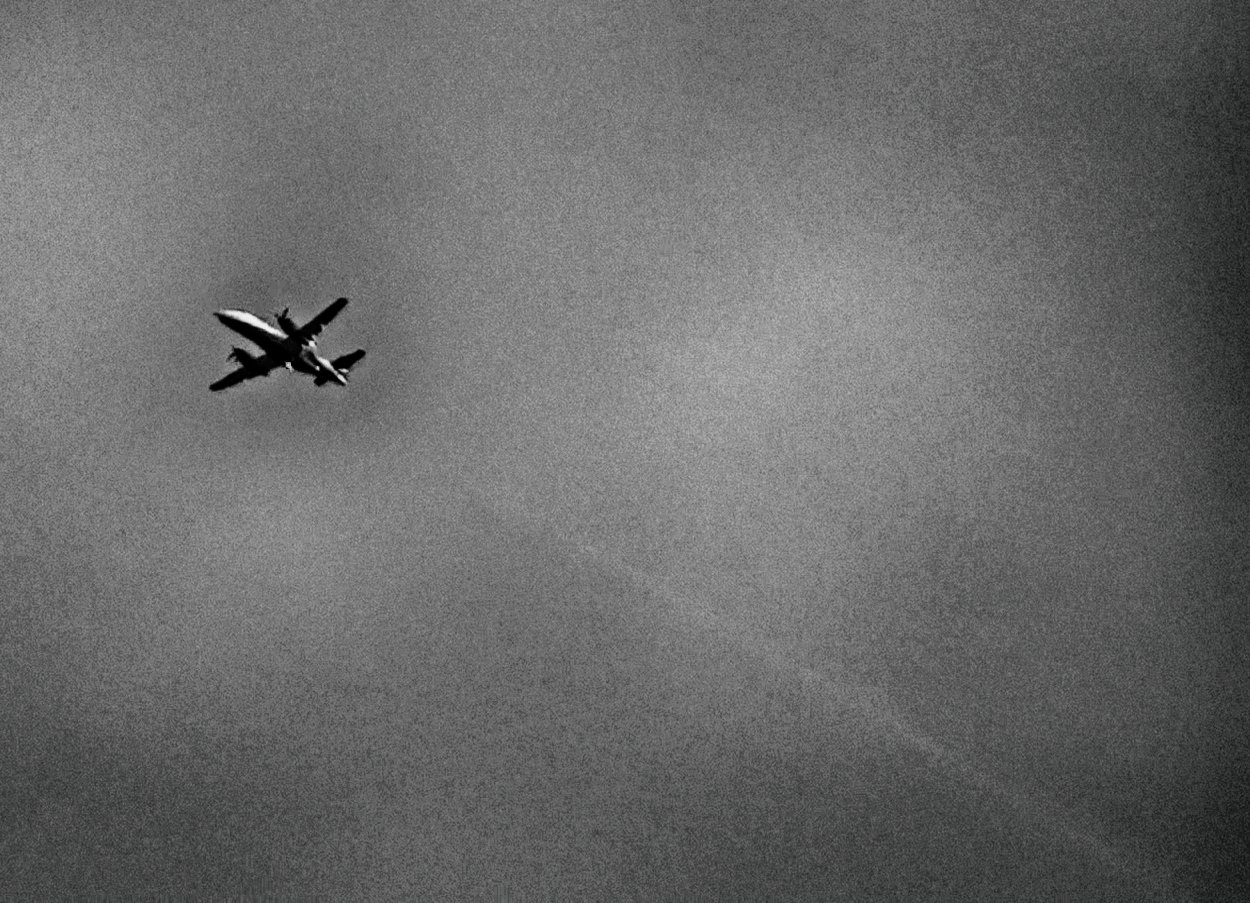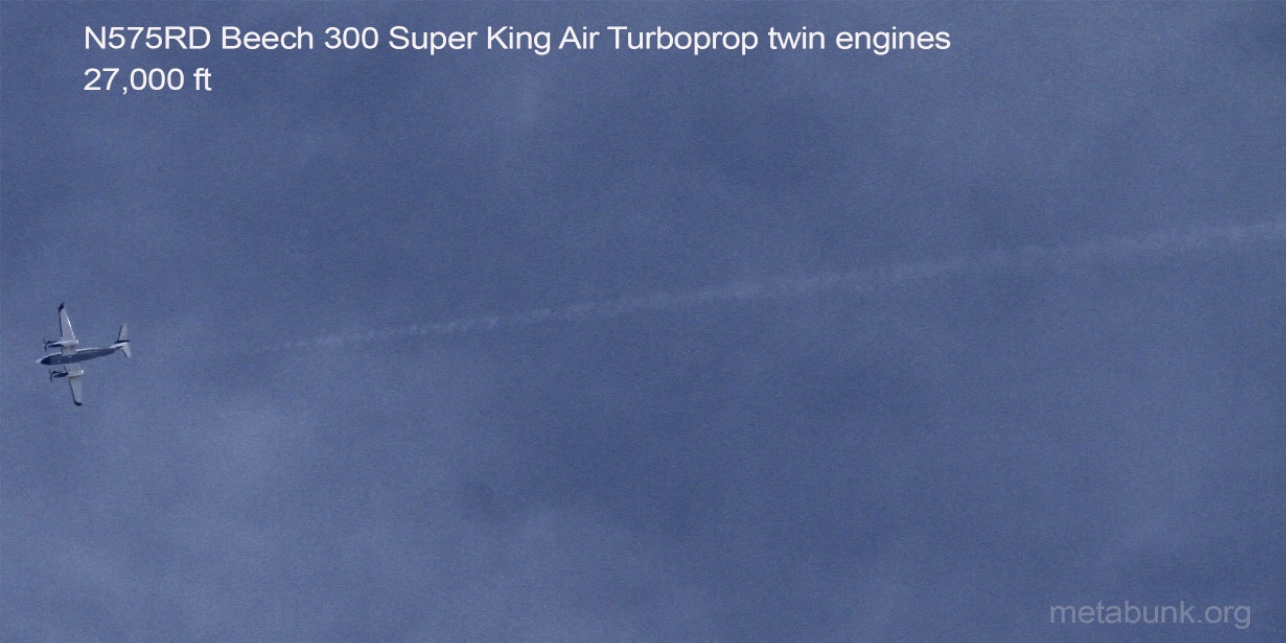
This photo is interesting for a number of reasons. It's a propellor plane flying at 27,000 feet and leaving a contrail. One side of the contrail is significantly larger than the other. The photo was taken at about 18:20 UTC (11:20 PDT) on Friday Oct 23, 2015.
It appears at first as if it is only leaving one contrail, but as it spreads out, it becomes more apparent that there are two:
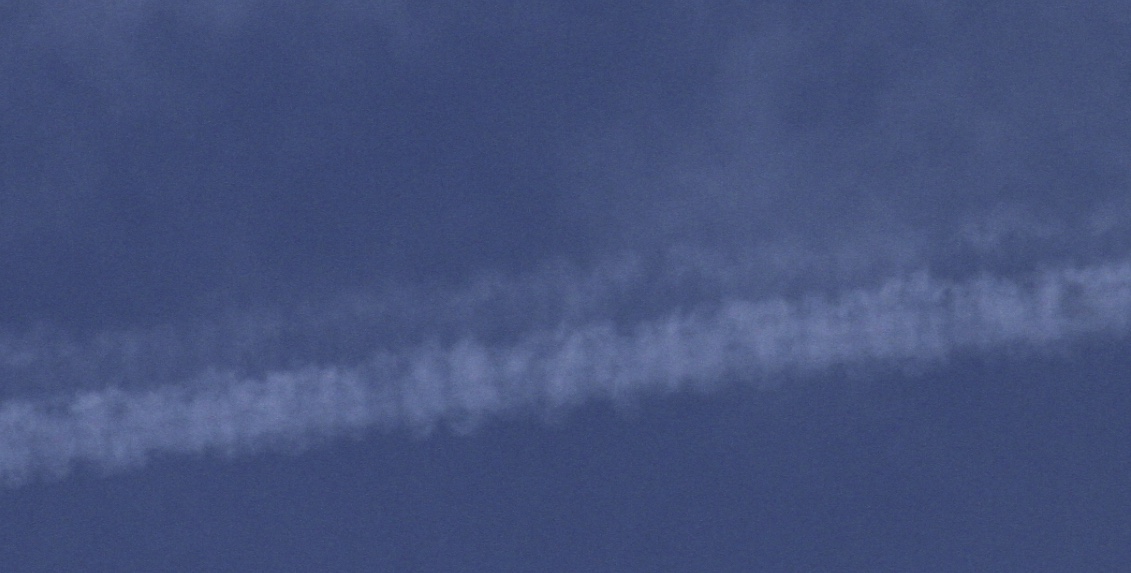
The plane itself is N575RD, at twin engine turboprop:
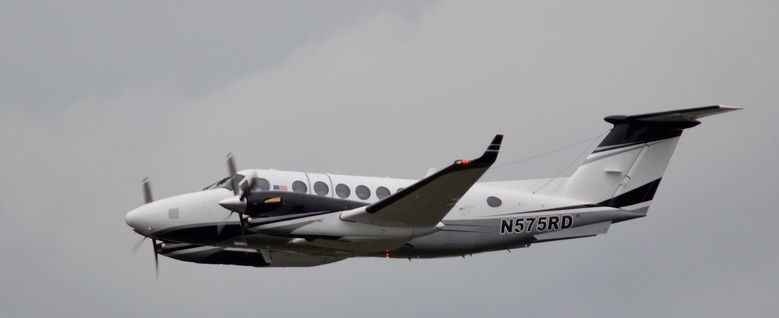
Earlier I'd been taking photos of what I though were 737's or similar climbing out of SFO, and leaving aerodynamic contrails. I was surprised when I zoomed in on one and found that was a turboprop too.
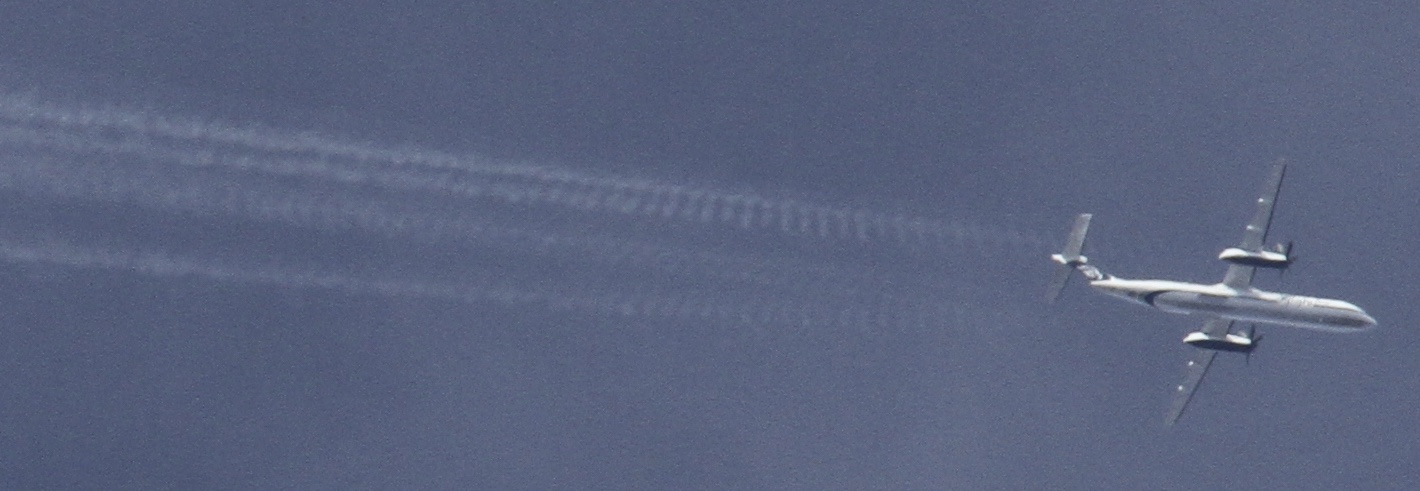
This was Alaska flight 2586, a Bombardier Dash 8 Q400 (N404QX), at an even lower 25,000 feet, leaving a very large contrail. It was flying from San Jose.
It also had a curiously asymmetric contrail, with the trail on the pilot's left (bottom in the photo), seeming to diverge a lot more than the other. I wonder if this is to do with the rotation of the engine wake interacting with the vortex sheet from the wing. If both engines rotate in the same direction (which it seems they do, looking at other photos of the plane), then that will produce two different wake interactions.
Both contrails were persistent, and at one point they crossed. The large contrail here is from the Alaskan flight.
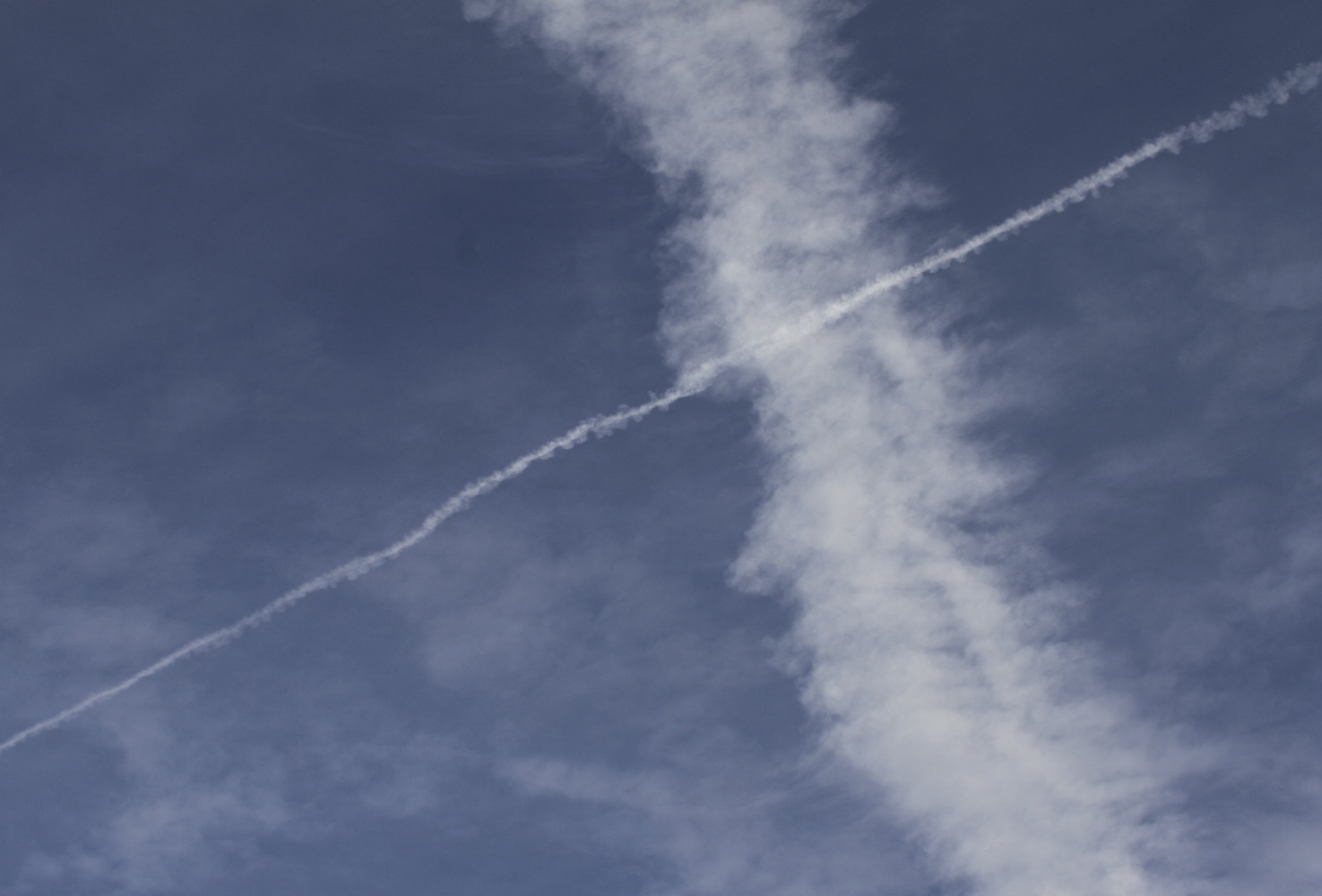
The Alaskan contrail was also very long, going from horizon to horizon (my horizon is a bit limited by hills and trees though).
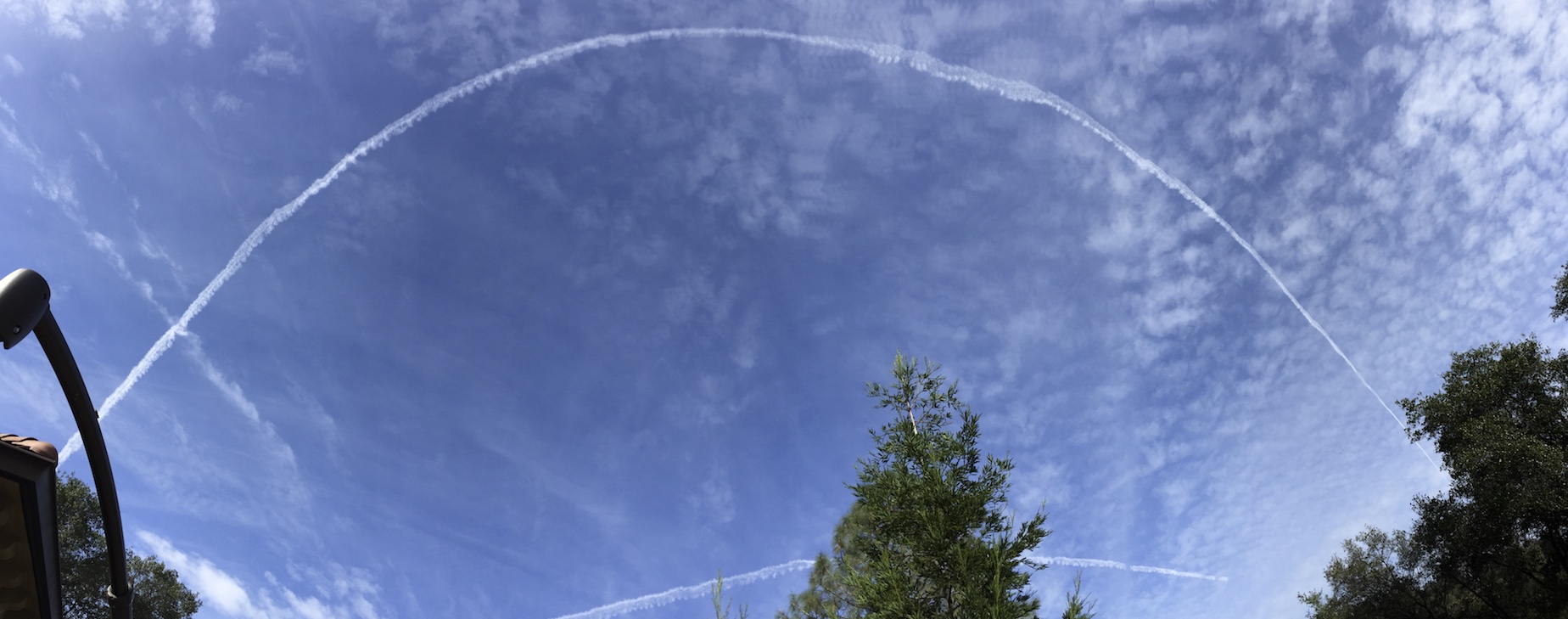
The propellor had a very interesting effect on the trails, which made me wonder if the primary formation mechanism here was actually aerodynamic from the props?
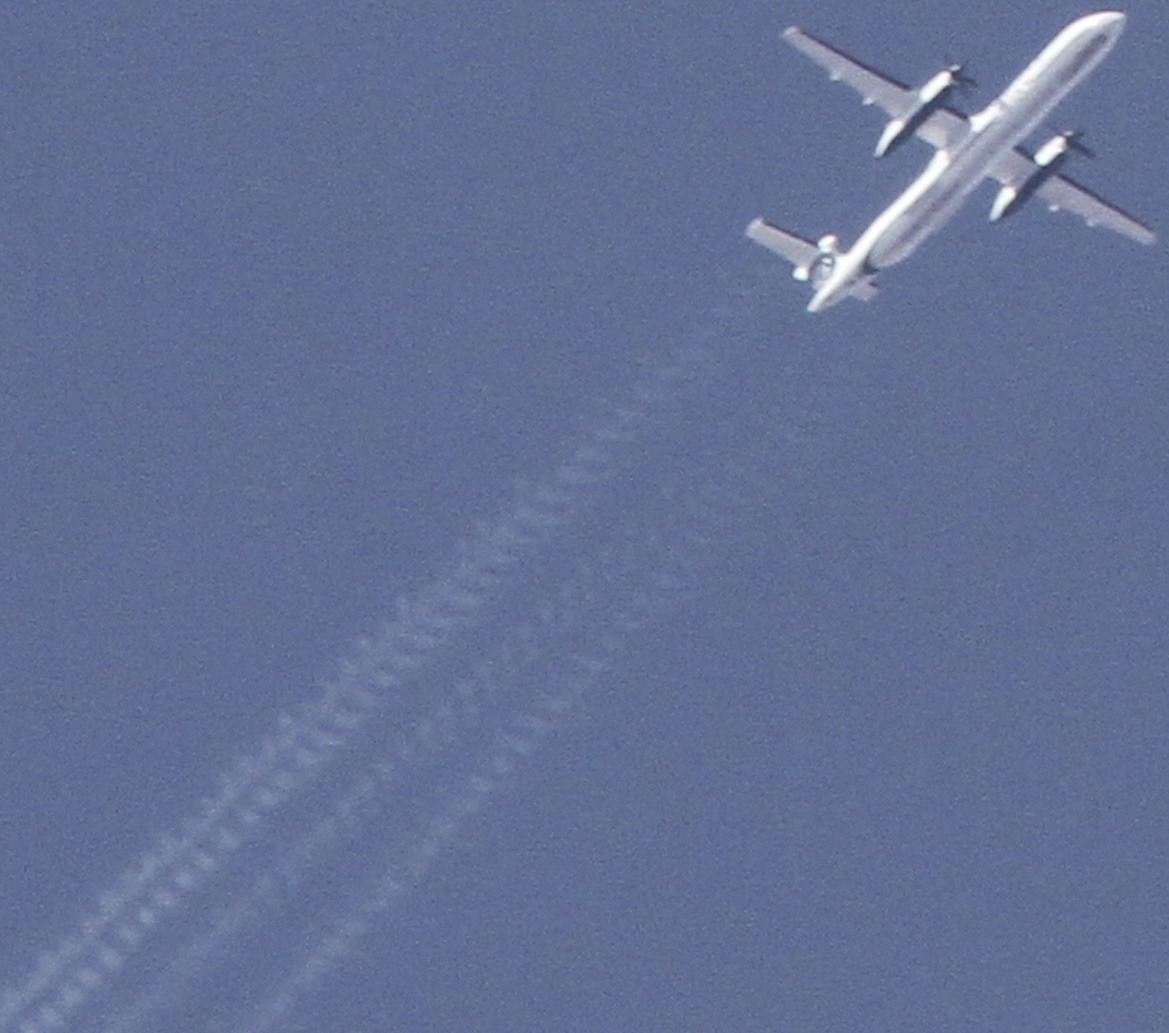
Remember this is at 25,000 feet. Exhaust contrail formation temperature is -40°F, and US Air Net gives this forecast for Sacramento (very close to here).
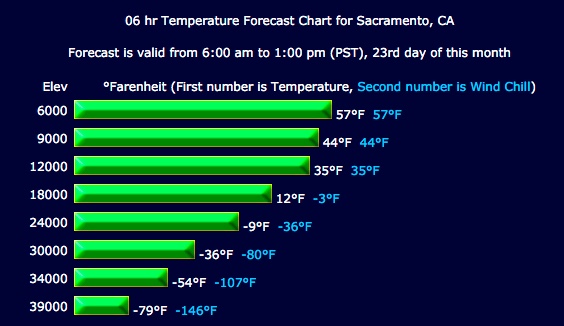
Meaning you would not expect any exhaust contrails until well above 30,000 feet, and neither of these planes were even close.
Looking at nearby soundings for this morning (12Z = 5AM)
72493 OAK Oakland Int Observations at 12Z 23 Oct 2015
-----------------------------------------------------------------------------
PRES HGHT TEMP DWPT RELH MIXR DRCT SKNT THTA THTE THTV
hPa m C C % g/kg deg knot K K K
-----------------------------------------------------------------------------
514.0 5577 -9.1 -30.1 16 0.61 347 16 319.4 321.6 319.5
500.0 5790 -10.7 -34.7 12 0.40 345 17 319.9 321.5 320.0
499.9 5791 -10.7 -34.7 12 0.40 350 22 319.9 321.5 320.0
494.0 5883 -11.1 -34.1 13 0.43 346 23 320.6 322.2 320.6
483.0 6056 -10.9 -36.9 10 0.34 337 25 322.9 324.2 322.9
480.4 6096 -11.2 -36.8 10 0.34 335 26 322.9 324.2 323.0
425.3 7010 -19.0 -34.9 23 0.47 315 39 324.5 326.3 324.6
400.0 7470 -22.9 -33.9 36 0.55 315 36 325.1 327.2 325.2
391.9 7620 -24.2 -34.6 38 0.52 325 38 325.4 327.4 325.5
386.0 7731 -25.1 -35.1 39 0.50 323 38 325.6 327.5 325.7
346.0 8520 -30.1 -44.1 24 0.22 310 40 329.1 330.0 329.2
330.7 8839 -32.8 -50.4 16 0.11 305 41 329.7 330.1 329.7
325.0 8963 -33.9 -52.9 13 0.09 307 40 329.9 330.2 329.9
316.6 9144 -35.3 -55.3 11 0.07 310 39 330.3 330.6 330.3
300.0 9520 -38.3 -60.3 8 0.04 315 41 331.3 331.4 331.3
264.6 10363 -46.0 -66.3 8 0.02 315 42 332.1 332.2 332.1
259.0 10508 -47.3 -67.3 8 0.02 313 44 332.2 332.3 332.2
25,000 feet is 7620m, the temperature is only -24° to -26°C (and that's at 5AM).
72489 REV Reno Observations at 12Z 23 Oct 2015
-----------------------------------------------------------------------------
PRES HGHT TEMP DWPT RELH MIXR DRCT SKNT THTA THTE THTV
hPa m C C % g/kg deg knot K K K
-----------------------------------------------------------------------------
515.0 5545 -13.1 -54.1 2 0.05 344 20 314.3 314.5 314.4
500.0 5770 -14.9 -30.9 24 0.58 340 21 314.8 316.9 314.9
498.6 5791 -15.0 -30.8 25 0.59 335 23 314.9 317.1 315.1
482.0 6046 -16.1 -30.1 29 0.65 335 26 316.6 319.0 316.8
478.8 6096 -15.6 -34.9 17 0.42 335 26 317.9 319.5 318.0
476.0 6140 -15.1 -39.1 11 0.27 337 28 319.0 320.1 319.1
459.8 6401 -16.2 -40.2 11 0.25 350 37 320.9 321.8 320.9
455.0 6479 -16.5 -40.5 11 0.25 349 38 321.4 322.4 321.4
405.0 7340 -23.9 -40.9 19 0.27 341 47 322.7 323.7 322.8
400.0 7430 -24.5 -40.5 21 0.28 340 48 323.1 324.2 323.1
389.6 7620 -25.9 -40.1 25 0.30 335 52 323.6 324.8 323.7
373.5 7925 -28.3 -39.6 33 0.33 330 56 324.4 325.7 324.5
372.0 7954 -28.5 -39.5 34 0.33 330 56 324.5 325.8 324.6
360.0 8188 -29.7 -45.7 20 0.18 329 56 326.0 326.7 326.0
331.0 8781 -34.3 -53.3 13 0.08 327 55 327.6 327.9 327.6
314.1 9144 -37.4 -55.9 13 0.06 325 55 328.2 328.5 328.2
300.0 9460 -40.1 -58.1 13 0.05 325 58 328.7 328.9 328.7
290.0 9690 -42.3 -58.3 16 0.05 325 58 328.8 329.0 328.8
250.1 10668 -51.5 -61.5 29 0.04 325 60 329.4 329.5 329.4
So are these purely aerodynamic contrails?
Last edited:

